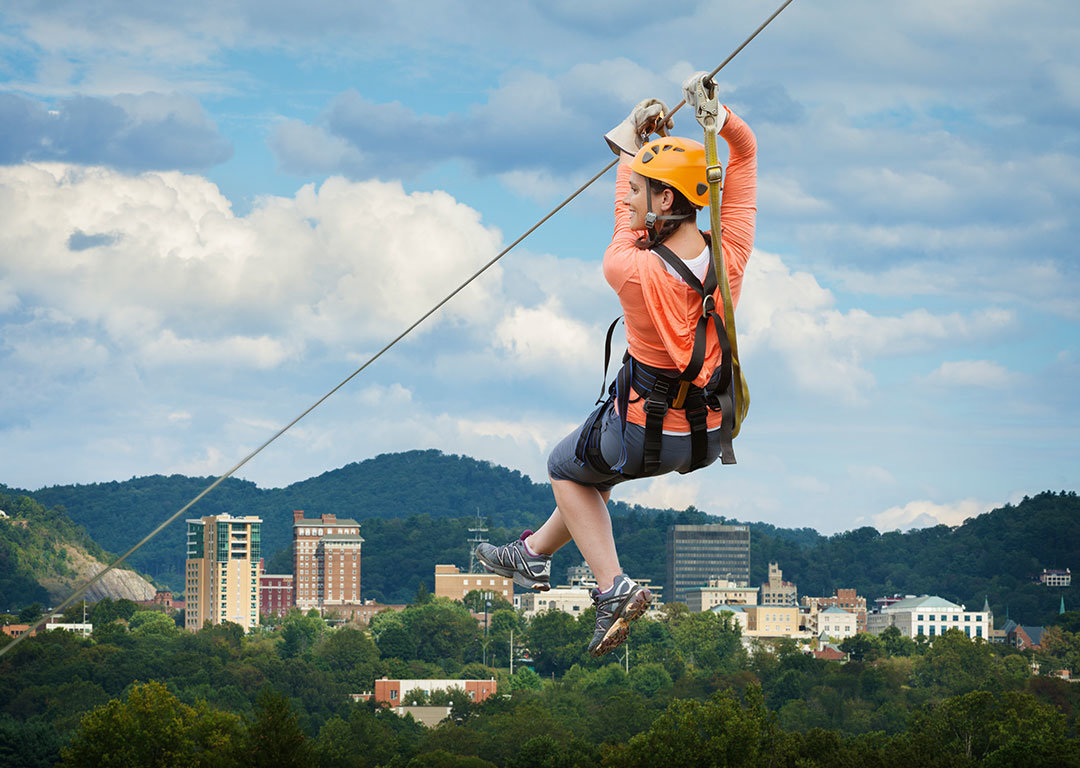
At its most basic, a zip line is a wire that begins higher than it ends. Using the slope’s natural drop, a person or freight may move down the wire on a pulley system that reduces friction to assist the rider in accelerating. The following are the main components of a zip line:
1. Zipline trolley
A zipline trolley is a device with two or more pulley wheels that sit on top of the zipline rope and is responsible for securely transporting a rider from one end of the platform to the other via handlebar, harness, or seat. Trolleys have several characteristics depending on the intended riding function. Some trolleys feature a sturdy built-in handlebar, while others are easily removable and have built-in carabiners. They are usually dragged back to the starting point by a rope. A trolley may be readily detached from the cable and transferred to the next segment or returned to the starting place.
2. Zipline cord
The zip line is a crucial component of any zip line system. It’s all about the travel, which dictates the sort of landscape and perspectives you’ll see along the way. It also determines how rapidly you travel. Most zip lines in zip line tower construction are made of stainless steel, while some are made of galvanized aviation wires.
3. Zipline brake
The zip line bake is a crucial component that allows the rider to come to a complete stop at the end of the zip line. Zipline brakes are classified into two types: active and passive. The sort of brake you choose will significantly impact your company’s risk management and the duration of your customers’ zip line experience. To begin the braking process, active zip line brakes need human interaction. Passive zip line brakes operate without the rider or guide doing anything. While active brakes allow riders and personnel to get more involved in the adventure, they may also pose more danger.
4. Emergency backup brake
The emergency brake is a critical component of the zip line braking system. It’s a secondary braking system that takes over automatically if the primary brake fails. It aids with the avoidance of rider injury and death due to brake failure. During the construction of a zip line, you should perform appropriate testing to verify that both the primary and emergency brakes work correctly.
5. Zipline Platform
Many zip lines include platforms where riders begin and finish their journey. If you have suitable terrain, you may simply require basic platforms for riders. If there isn’t enough elevation variation, you could require elevated platforms. The design of a zip line platform will be determined by terrain, primary and secondary braking needs, and the amount of space necessary for guide and rider comfort.
6. Guides
Even if a zip line is constructed correctly, a friendly, well-trained guide still needs to deliver a good rider experience. The guides are there to do more than just instruct riders on basic riding techniques and offer safety information. To further engage riders in the adventure, they should be able to share information about the place, the landscape, and the surrounding environment.
Conclusion
Ziplines provide a thrilling experience for all riders. On the other hand, ziplines must conform to stringent rules and standards for the correct design, engineering, installation, operation, and maintenance to be safe.

